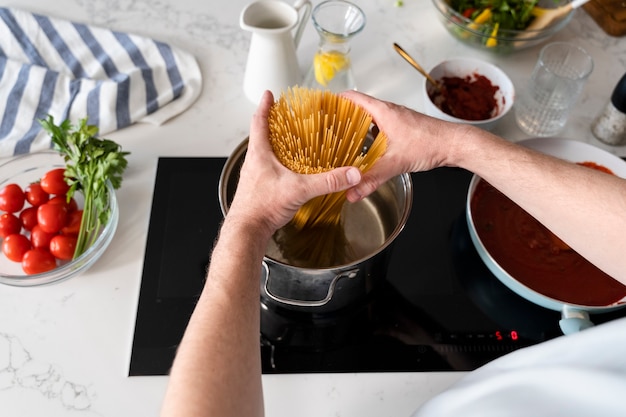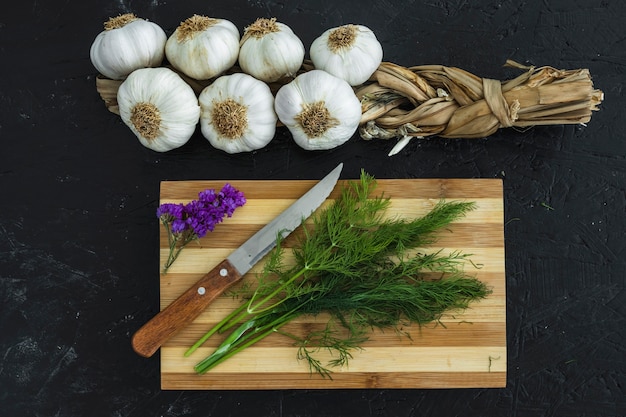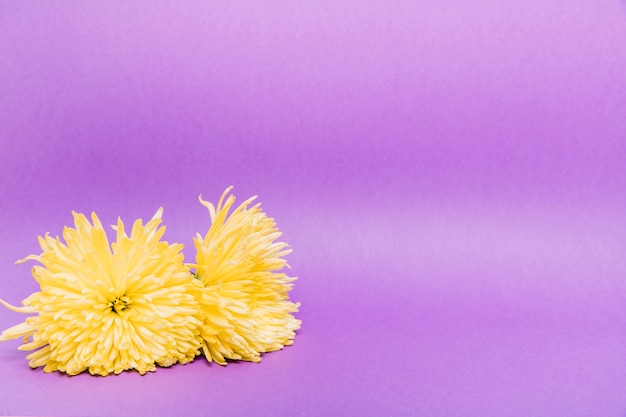Delicious Dandelion Recipes: Foraging, Cooking, and Enjoying This Versatile Wild Edible
There's a certain magic to finding a patch of vibrant yellow dandelions poking through the grass. It's a symbol of spring, a reminder that life is bursting forth, and, for those of us who know their culinary potential, a treasure trove of delicious ingredients just waiting to be discovered. This isn't just about nostalgia; it's about embracing the joy of foraging, learning about our local ecosystems, and uncovering the hidden delights of the natural world. So, put on your foraging shoes, grab a basket, and join me as we explore the wonders of dandelion cuisine!
(Part 1) From Garden Weed to Culinary Star

Growing up, I remember dandelions being treated like the enemy. My mum would spend hours meticulously weeding them out of our lawn, declaring them "just a nuisance". I never really questioned it, just assumed they were nothing more than a pesky weed, destined for the compost heap. Little did I know that they held a world of flavour and versatility, waiting to be unleashed.
The Dandelion's Transformation
It wasn't until I stumbled upon a foraging workshop a few years back that my perspective shifted. Suddenly, this humble weed was presented as a culinary superstar, bursting with nutrients and a surprisingly pleasant flavour. I was hooked.
From that moment on, I saw dandelions with new eyes. I started noticing their delicate, yellow blooms, the intricate patterns of their leaves, and the vibrant green of their stems. This wasn't just a weed anymore; it was a plant with a story, a history, and a unique character all its own. It was a reminder that nature often hides its treasures in plain sight, waiting for us to discover them.
More Than Just a Weed
The dandelion, scientifically known as Taraxacum officinale, has been a vital part of human diets for centuries. It's a powerhouse of vitamins and minerals, rich in vitamin A, C, and K, along with potassium, iron, and calcium. It's also a good source of antioxidants, which are known to protect the body from cell damage.
But beyond its nutritional value, the dandelion possesses an intriguing flavour profile that lends itself to a wide range of culinary applications. The leaves have a slightly bitter, peppery edge, reminiscent of arugula, while the flowers offer a delicate, honeyed sweetness, similar to that of a mild floral tea. The roots, with their earthy, coffee-like taste, can be roasted and brewed into a caffeine-free beverage that is surprisingly satisfying.
What's even more fascinating is that dandelion's versatility extends beyond its taste. Traditional medicine has long recognized its medicinal properties, from its diuretic effects to its ability to support liver health. And, in recent years, dandelion extracts have found their way into skincare products, prized for their antioxidant and anti-inflammatory properties. Truly, this unassuming plant packs a powerful punch.
(Part 2) The Art of Foraging

Foraging for dandelions is a delightful adventure, offering a chance to connect with nature and appreciate the bounty that surrounds us. But before you embark on your foraging expedition, it's essential to be absolutely sure you're identifying dandelions correctly. Mistaking another plant for a dandelion can have unpleasant consequences, so accuracy is key.
Identifying Your Harvest
Here are a few key features to look for when identifying dandelions:
- The Leaves: Dandelion leaves are deeply toothed, forming a rosette around the base of the plant. They're typically a vibrant green, with a slightly glossy surface. They resemble a delicate, serrated crown, contrasting beautifully with the lush green grass they often grow amongst.
- The Flower: The dandelion flower is bright yellow, with a single, round head that is about 1-2 inches wide. It's made up of numerous, individual florets, each with a tiny, yellow petal. These florets, when viewed closely, reveal a remarkable detail: they have a unique, slender, tube-like structure that extends downwards.
- The Stem: The stem is hollow and cylindrical, with a milky sap that oozes out when broken. It's typically a pale green to dark green in colour. This milky sap, a telltale sign of the dandelion, is a testament to the plant's resilience and ability to thrive in various environments.
Choosing the Right Spot
When foraging for dandelions, it's essential to choose a clean, unpolluted location. Avoid areas where there might be high traffic, industrial sites, or pesticide use. Look for patches of dandelions growing in undisturbed areas like parks, meadows, and fields. These havens offer a safe sanctuary for the dandelions to flourish, and for us to harvest them without contamination.
Foraging Ethically
Remember to forage responsibly. Don't collect more than you need, and leave enough for the local ecosystem. Always ask for permission before foraging on private land. And most importantly, be mindful of the environment and leave no trace behind. The goal is to enjoy the fruits of nature without disrupting its delicate balance.
(Part 3) Cleaning and Preparing Dandelions

Once you've harvested your dandelion bounty, it's time to give them a good clean.
Washing and Drying
Rinse the leaves thoroughly under running water, removing any dirt or debris. Gently pat them dry with a clean kitchen towel. If using the flowers, separate them from the stems and gently shake off any excess pollen.
Blanching for a Milder Taste
If you find the dandelion leaves a little too bitter, blanching them can help to soften their flavour. Bring a pot of salted water to a boil, then add the leaves for about 30 seconds. Immediately plunge them into ice-cold water to stop the cooking process. Drain and pat dry. Blanching not only softens the leaves but also brightens their colour, making them visually appealing for salads or other dishes.
(Part 4) Dandelion Recipes: From Savoury to Sweet
Now comes the fun part: cooking with dandelions! The possibilities are endless, from savoury salads and soups to sweet fritters and jams. Let's dive into some of my favourite recipes.
Dandelion Greens Salad with Lemon Vinaigrette
This is a simple, yet delicious way to enjoy the fresh, slightly bitter flavour of dandelion greens.
- Ingredients:
- 2 cups of dandelion greens, washed and dried
- 1/4 cup of olive oil
- 2 tablespoons of lemon juice
- 1 tablespoon of Dijon mustard
- Salt and pepper to taste
- Instructions:
- In a small bowl, whisk together the olive oil, lemon juice, Dijon mustard, salt, and pepper.
- Toss the dandelion greens with the vinaigrette and serve immediately.
This salad is a testament to the simplicity of dandelion cuisine. The slight bitterness of the greens is perfectly balanced by the tangy lemon vinaigrette, creating a refreshing and healthy dish.
Creamy Dandelion Soup
For a comforting and flavourful soup, try this creamy dandelion recipe.
- Ingredients:
- 1 tablespoon of butter
- 1 onion, chopped
- 2 cloves of garlic, minced
- 3 cups of vegetable broth
- 1 cup of dandelion greens, blanched
- 1/2 cup of heavy cream
- Salt and pepper to taste
- Instructions:
- Melt the butter in a large saucepan over medium heat. Add the onion and cook until softened, about 5 minutes. Stir in the garlic and cook for another minute.
- Pour in the vegetable broth and bring to a boil. Reduce heat and simmer for 10 minutes.
- Add the blanched dandelion greens and simmer for another 5 minutes.
- Use an immersion blender to puree the soup until smooth. Stir in the heavy cream, salt, and pepper to taste. Serve hot.
The creamy texture of this soup, combined with the earthy flavour of dandelion greens, creates a unique and satisfying culinary experience. It's a perfect dish for a chilly evening, offering warmth and nourishment in equal measure.
Dandelion Fritters
These sweet and savoury fritters are a delightful way to use dandelion flowers.
- Ingredients:
- 1 cup of dandelion flowers, separated from stems
- 1 cup of all-purpose flour
- 1 teaspoon of baking powder
- 1/4 teaspoon of salt
- 1 egg, beaten
- 1/2 cup of milk
- 1/4 cup of melted butter
- Oil for frying
- Powdered sugar for dusting (optional)
- Instructions:
- In a large bowl, whisk together the flour, baking powder, and salt.
- In a separate bowl, whisk together the egg, milk, and melted butter. Pour into the dry ingredients and stir until just combined.
- Fold in the dandelion flowers.
- Heat the oil in a large skillet over medium heat. Drop spoonfuls of the batter into the hot oil and cook until golden brown on both sides, about 2-3 minutes per side.
- Drain on paper towels and dust with powdered sugar, if desired. Serve warm.
These fritters are a delightful surprise, offering a unique twist on a classic recipe. The dandelion flowers add a delicate sweetness and a touch of floral aroma, making them perfect for a light dessert or a unique snack.
(Part 5) Dandelion Root Coffee
Dandelion roots are a fantastic alternative to coffee, offering a caffeine-free, earthy, and slightly sweet beverage.
Harvesting Dandelion Roots
To harvest dandelion roots, look for mature plants, ideally in the autumn or early spring before they start to flower. Dig down carefully around the base of the plant to loosen the root. Gently pull it up, ensuring you remove the entire root.
Cleaning and Drying
Wash the dandelion roots thoroughly, removing any dirt or debris. Cut them into smaller pieces and spread them out on a baking sheet lined with parchment paper. Dry them in a low oven (150°F/65°C) for about 3-4 hours, or until they are completely dry and brittle.
Roasting and Brewing
Once the roots are dry, roast them in a dry skillet over medium heat, stirring occasionally, until they turn a dark brown colour and release a pleasant aroma.
To make a cup of dandelion root coffee, grind the roasted roots coarsely. Add a tablespoon of the ground root to a cup of hot water. Steep for 5-10 minutes, then strain the coffee and enjoy.
Dandelion root coffee is a unique and refreshing alternative to traditional coffee. It has a slightly sweet and earthy flavour, with subtle hints of chocolate and caramel. Its caffeine-free nature makes it an ideal beverage for those who are looking to reduce their caffeine intake or avoid it altogether.
(Part 6) Beyond the Kitchen: The Many Uses of Dandelions
Dandelions aren't just for culinary purposes; they offer a range of benefits for health, beauty, and even the environment.
Health Benefits
Dandelion has been used in traditional medicine for centuries. It's known for its diuretic properties, which can help to flush out toxins from the body. It's also believed to support liver function, improve digestion, and boost the immune system.
Modern scientific research is beginning to validate many of the traditional uses of dandelion. Studies have shown that dandelion can help to reduce inflammation, lower blood sugar levels, and protect against certain types of cancer. It's even being investigated for its potential to combat antibiotic-resistant bacteria.
Beauty Benefits
Dandelion extract is often found in skincare products due to its antioxidant and anti-inflammatory properties. It can help to soothe irritated skin, reduce redness, and promote a healthy glow.
The antioxidant properties of dandelion can help to protect the skin from damage caused by free radicals, while its anti-inflammatory effects can help to reduce the appearance of wrinkles and age spots. Dandelion extract is also known to be a natural source of vitamin C, which is essential for collagen production and healthy skin.
Environmental Benefits
Dandelions are a valuable source of nectar and pollen for bees and other pollinators. They also play a role in soil health, helping to improve drainage and aeration.
By attracting pollinators, dandelions contribute to the health of our ecosystems. They help to ensure the pollination of other plants, which is essential for food production and biodiversity. Dandelion roots also help to break up compacted soil, improving drainage and allowing for better root growth in other plants.
(Part 7) Dandelion FAQs
1. Are all Dandelions Edible?
While most dandelions are safe to eat, it's important to avoid any that might have been exposed to pesticides or herbicides. Look for plants growing in clean, undisturbed areas. If you're unsure about a particular plant, it's best to err on the side of caution and avoid it.
Foraging safely is paramount. Always choose areas that are known to be pesticide-free and avoid areas with heavy traffic or industrial activity. If you're unsure about identifying a plant, it's always a good idea to consult with a knowledgeable forager or botanist.
2. Do Dandelions Have Any Side Effects?
Dandelions are generally considered safe for most people, but there are some potential side effects. For example, they can cause mild allergic reactions in some individuals. If you have a latex allergy, you may also be allergic to dandelions. It's always a good idea to start with small amounts and see how your body reacts.
As with any new food, it's best to start with small portions of dandelion and see how your body reacts. If you experience any adverse effects, stop consuming dandelion and consult with a healthcare professional.
3. Can I Grow Dandelions in My Garden?
Absolutely! Dandelions are easy to grow from seed. You can find dandelion seeds online or at local nurseries. Simply sow the seeds in a sunny location with well-drained soil.
Growing dandelions in your garden is a great way to ensure a consistent supply of this versatile ingredient. It's also a good way to attract pollinators to your garden and improve soil health.
4. What Happens If I Eat Too Many Dandelions?
While eating excessive amounts of dandelion greens can lead to digestive discomfort due to their high fibre content, it's unlikely to cause serious harm.
Dandelion greens, like many other leafy greens, are high in fibre. If you eat too much, you may experience bloating, gas, or diarrhoea. However, these effects are usually mild and temporary.
5. What Can I Do With Dandelion Seeds?
Dandelion seeds are often used for their medicinal properties, but they also make a fun and delicious treat. You can make dandelion seed tea or toast the seeds for a crunchy, nutty snack.
Dandelion seeds, known as "dandelion fluff", are a source of protein and fibre. They are also a good source of antioxidants and can be used to make a caffeine-free tea. Toasted dandelion seeds offer a crunchy, nutty flavour that is similar to sunflower seeds.
(Part 8) A Final Bite
As you venture out to forage for dandelions, remember it's not just about the food. It's about connecting with nature, learning about the plants around us, and appreciating the beauty of the natural world. It's about discovering the potential of these often-overlooked ingredients and unleashing their unique flavours. So, next time you see a patch of dandelions, don't just ignore them - embrace them! They're waiting to be transformed into culinary delights.
Everyone is watching

How to Cook Frozen Lobster Tails Perfectly: A Step-by-Step Guide
RecipesLobster. Just the word conjures up images of lavish meals, special occasions, and a taste of luxury. But let's...

Pigs in a Blanket Cooking Time: How Long to Bake for Perfect Results
RecipesAh, pigs in a blanket. Just the name conjures up images of those delightful little parcels of crispy pastry en...

Pork Fillet Cooking Time: How Long to Cook It Perfectly
RecipesPork fillet, or tenderloin as it's sometimes called, is a real favourite in our house. It's so versatile, and...

The Ultimate Guide to Tender, Juicy Pulled Pork
RecipesRight, let's talk pulled pork. It's one of those dishes that just screams "comfort food," doesn't it? I mean...

The Ultimate Guide to Cooking Sweet Potatoes: From Roasting to Mashing
RecipesSweet potatoes. Just the name conjures up images of warm, comforting dishes, bursts of vibrant color, and a to...
